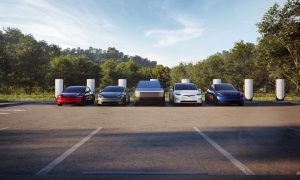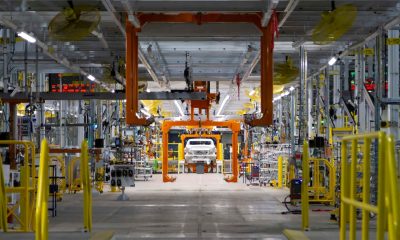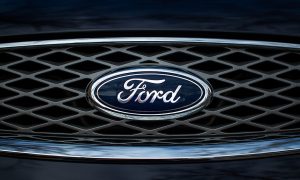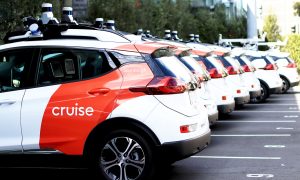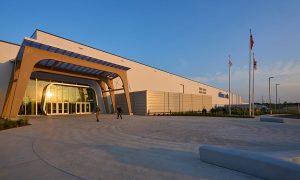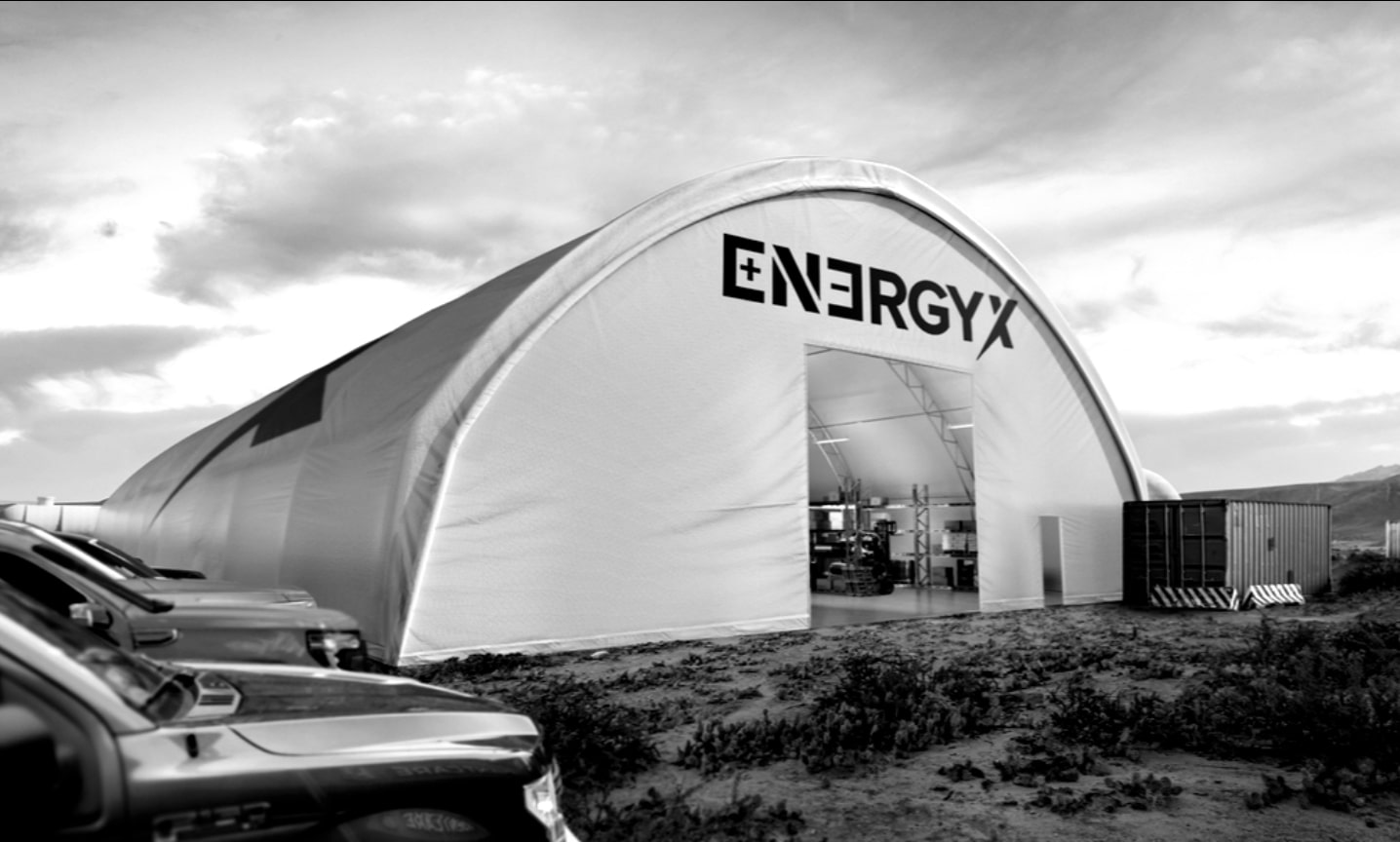

News
GM leaps ahead in lithium mining race, secures next-gen extraction deal
General Motors (GM) has secured a next-generation lithium extraction deal with Puerto Rico-based startup, EnergyX.
With the demand for lithium expected to surpass supply by 2030, automakers have never been more pressed to secure the resource, especially as it becomes increasingly essential for the future of their business, specifically regarding the production of electric vehicles. This has pushed many, including GM, further down its supply chain, buying up companies and securing supplies for the future. Now, GM has gone even further, investing in lithium extraction startup EnergyX, leading a $50 million investment round.
GM has already invested in countless extraction companies and their subsequent mining projects, primarily focusing on lithium, but today’s investment is distinct from all the rest. EnergyX, which GM has invested an undisclosed amount of capital into, is looking to pioneer a new lithium extraction method entirely, which could place GM at the forefront of the most affordable lithium on the planet.
Specifically, EnergyX specializes in “Direct Lithium Extraction” (DLE) technologies, which promise to produce battery-grade lithium from previously overlooked brine sources.
Currently, most lithium extraction is based on the simple and relatively effective “pond evaporation” extraction method, which only requires an extractor to pump out brine, let the water evaporate, and then process the remainder to create pure lithium. However, this process is time-consuming and involves significant chemical processing to get to pure lithium after evaporation. Worse than that, the alternative is even more expensive, more environmentally damaging, and exceedingly rare; hard rock lithium mining.
EnergyX uses a proprietary system to create pure lithium from brines that would typically not work as part of the “evap.” method, and according to the company, it achieves incredible material ROI. EnergyX proudly advertises that “the company’s LiTAS™ technology increases lithium recovery rates to over 90% from the current industry standard of 30-40% using ponds and hit 94% during their field trials.”
However, this system isn’t without its hurdles, and for many automakers, it may appear as a risky investment. Thus far, no DLE refining companies have achieved commercialization, with the most prominent long-lasting project being the BMW-backed Lilac Solutions Inc.
Along with this risk, GM does have some incredible upsides. Not only would it be investing at the ground floor of a potentially booming business and achieve outstanding extraction efficiency, but it would also receive “the right of first refusal” from its newest investment, essentially giving the automaker the right to buy ahead before anyone else.
In a comment to Teslarati, EnergyX explained that it does not currently own any lithium brine reserves but plans to be a refiner for other extractors in the Americas. The business plans to construct five demonstration facilities that will show off its capabilities to lithium extractors, notably within the “lithium triangle” of South America. These facilities will be built in Argentina, Chile, California, Arkansas, and Utah, respectively.
EnergyX also noted to Teslarati that it will begin supplying GM with battery-grade lithium in the coming years, though a specific timeline has not been made public.
Outside of this next-generation lithium extraction process that America’s largest automaker has invested in, it has also become a leader in investing in traditional lithium projects throughout the Americas. Perhaps most notably, thanks to a massive $650 million investment, GM is now the largest shareholder in the Lithium Americas corporation, which is developing North America’s largest lithium deposit; Thacker Pass, Nevada.
As for EnergyX, besides this series B investment round led by GM, it plans to offer an IPO in late 2024 and has already attracted the interest of numerous investment firms looking to get in as soon as the offering is available.
What do you think of the article? Do you have any comments, questions, or concerns? Shoot me an email at william@teslarati.com. You can also reach me on Twitter @WilliamWritin. If you have news tips, email us at tips@teslarati.com!
News
Tesla begins Robotaxi certification push in Arizona: report
Tesla seems serious about expanding its Robotaxi service to several states in the coming months.

Tesla has initiated discussions with Arizona transportation regulators to certify its driverless Robotaxi service in the state, as per a recent report from Bloomberg News. The move follows Tesla’s launch of its Robotaxi pilot program in Austin, Texas, as well as CEO Elon Musk’s recent comments about the service’s expansion in the Bay Area.
The Arizona Department of Transportation confirmed to Bloomberg that Tesla has reached out to begin the certification process for autonomous ride-sharing operations in the state. While details remain limited, the outreach suggests that Tesla is serious about expanding its driverless Robotaxi service to several territories in the coming months.
The Arizona development comes as Tesla prepares to expand its service area in Austin this weekend, as per CEO Elon Musk in a post on X. Musk also stated that Tesla is targeting the San Francisco Bay Area as its next major market, with a potential launch “in a month or two,” pending regulatory approvals.
Tesla first launched its autonomous ride-hailing program on June 22 in Austin with a small fleet of Model Y vehicles, accompanied by a Tesla employee in the passenger seat to monitor safety. While still classified as a test, Musk has said the program will expand to about 1,000 vehicles in the coming months. Tesla will later upgrade its Robotaxi fleet with the Cyercab, a two-seater that is designed without a steering wheel.
Sightings of Cybercab castings around the Giga Texas complex suggests that Tesla may be ramping the initial trial production of the self-driving two-seater. Tesla, for its part, has noted in the past that volume production of the Cybercab is expected to start sometime next year.
In California, Tesla has already applied for a transportation charter-party carrier permit from the state’s Public Utilities Commission. The company is reportedly taking a phased approach to operating in California, with the Robotaxi service starting with pre-arranged rides for employees in vehicles with safety drivers.
News
Tesla sets November 6 date for 2025 Annual Shareholder Meeting
The automaker announced the date on Thursday in a Form 8-K.

Tesla has scheduled its 2025 annual shareholder meeting for November 6, addressing investor concerns that the company was nearing a legal deadline to hold the event.
The automaker announced the date on Thursday in a Form 8-K submitted to the United States Securities and Exchange Commission (SEC). The company also listed a new proposal submission deadline of July 31 for items to be included in the proxy statement.
Tesla’s announcement followed calls from a group of 27 shareholders, including the leaders of large public pension funds, which urged Tesla’s board to formally set the meeting date, as noted in a report from The Wall Street Journal.
The group noted that under Texas law, where Tesla is now incorporated, companies must hold annual meetings within 13 months of the last one if requested by shareholders. Tesla’s previous annual shareholder meeting was held on June 13, 2024, which placed the July 13 deadline in focus.
Tesla originally stated in its 2024 annual report that it would file its proxy statement by the end of April. However, an amended filing on April 30 indicated that the Board of Directors had not yet finalized a meeting date, at least at the time.
The April filing also confirmed that Tesla’s board had formed a special committee to evaluate certain matters related to CEO Elon Musk’s compensation plan. Musk’s CEO performance award remains at the center of a lengthy legal dispute in Delaware, Tesla’s former state of incorporation.
Due to the aftermath of Musk’s legal dispute about his compensation plan in Delaware, he has not been paid for his work at Tesla for several years. Musk, for his part, has noted that he is more concerned about his voting stake in Tesla than his actual salary.
At last year’s annual meeting, TSLA shareholders voted to reapprove Elon Musk’s compensation plan and ratified Tesla’s decision to relocate its legal domicile from Delaware to Texas.
Elon Musk
Grok coming to Tesla vehicles next week “at the latest:” Elon Musk
Grok’s rollout to Tesla vehicles is expected to begin next week at the latest.

Elon Musk announced on Thursday that Grok, the large language model developed by his startup xAI, will soon be available in Tesla vehicles. Grok’s rollout to Tesla vehicles is expected to begin next week at the latest, further deepening the ties between the two Elon Musk-led companies.
Tesla–xAI synergy
Musk confirmed the news on X shortly after livestreaming the release of Grok 4, xAI’s latest large language model. “Grok is coming to Tesla vehicles very soon. Next week at the latest,” Musk wrote in a post on social media platform X.
During the livestream, Musk and several members of the xAI team highlighted several upgrades to Grok 4’s voice capabilities and performance metrics, positioning the LLM as competitive with top-tier models from OpenAI and Google.
The in-vehicle integration of Grok marks a new chapter in Tesla’s AI development. While Tesla has long relied on in-house systems for autonomous driving and energy optimization, Grok’s integration would introduce conversational AI directly into its vehicles’ user experience. This integration could potentially improve customer interaction inside Tesla vehicles.
xAI and Tesla’s collaborative footprint
Grok’s upcoming rollout to Tesla vehicles adds to a growing business relationship between Tesla and xAI. Earlier this year, Tesla disclosed that it generated $198.3 million in revenue from commercial, consulting, and support agreements with xAI, as noted in a report from Bloomberg News. A large portion of that amount, however, came from the sale of Megapack energy storage systems to the artificial intelligence startup.
In July 2023, Musk polled X users about whether Tesla should invest $5 billion in xAI. While no formal investment has been made so far, 68% of poll participants voted yes, and Musk has since stated that the idea would be discussed with Tesla’s board.
-

 Elon Musk1 week ago
Elon Musk1 week agoTesla investors will be shocked by Jim Cramer’s latest assessment
-

 Elon Musk3 days ago
Elon Musk3 days agoElon Musk confirms Grok 4 launch on July 9 with livestream event
-

 Elon Musk13 hours ago
Elon Musk13 hours agoxAI launches Grok 4 with new $300/month SuperGrok Heavy subscription
-

 News7 days ago
News7 days agoTesla Model 3 ranks as the safest new car in Europe for 2025, per Euro NCAP tests
-

 Elon Musk2 weeks ago
Elon Musk2 weeks agoA Tesla just delivered itself to a customer autonomously, Elon Musk confirms
-

 Elon Musk1 week ago
Elon Musk1 week agoxAI’s Memphis data center receives air permit despite community criticism
-

 Elon Musk2 weeks ago
Elon Musk2 weeks agoTesla’s Omead Afshar, known as Elon Musk’s right-hand man, leaves company: reports
-

 News2 weeks ago
News2 weeks agoXiaomi CEO congratulates Tesla on first FSD delivery: “We have to continue learning!”


